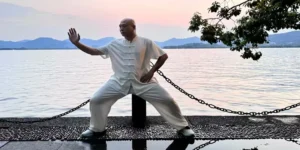Walk into any park at dawn, and you’ll likely see practitioners moving through the graceful, flowing sequences of Tai Chi.
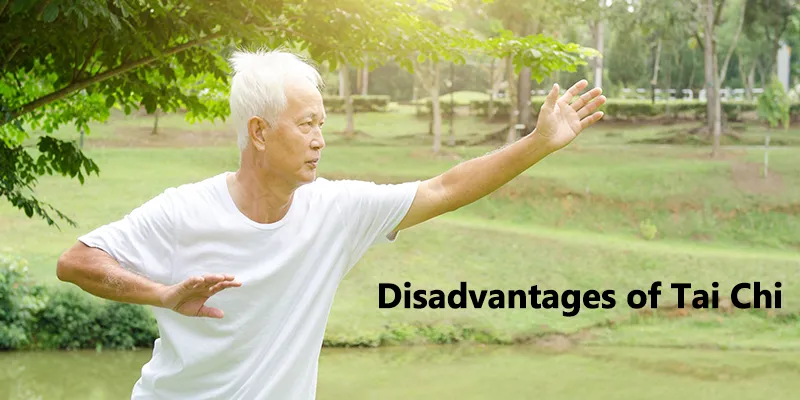
Tai chi’s reputation for promoting serenity, balance, and longevity. Yet, observe over weeks or months, and a truth emerges: many who start Tai Chi do not persist. Enthusiasm wanes, tai chi practitioners drop, and the initial promise fades. Why? While individual reasons vary, a significant factor lies not in the practitioner’s lack of will but often in underestimating or encountering the genuine disadvantages inherent in learning and practicing Tai Chi effectively. Beyond the serene surface, Tai Chi presents practical and physiological challenges.
This article rigorously examines these drawbacks, including the substantial time commitment, spatial requirements, accessibility issues, authenticity concerns, unique physiological effects, and potential injury risks.
Disadvantage 1: Tai Chi Practice Time is Long
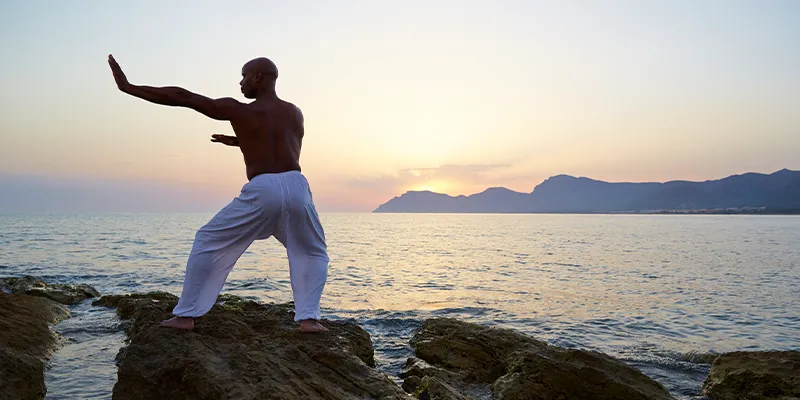
Unlike a high-intensity spin class offering immediate endorphin rushes, or even yoga, where beginners often feel stretches and fatigue quickly, Tai Chi operates on a different time. The most significant disadvantage is the long time investment before you get profound benefits. While relaxation and mild centering can be felt early, the deeper layers—improved internal energy flow, refined neuromuscular coordination, effortless power, and significant structural health changes, it demand persistent, consistent practice, often measured in months and years, not days or weeks.
Why should you keep practicing Tai Chi? It requires you to let go of tension and habit and replace it with integrated, core-driven, mind-guided, full-body movement. This “internal” focus is subtle and complex. Mastering the precise alignments, weight shifts, silk-reeling spirals, and the interplay of relaxation and structure takes lots of repetitions. Furthermore, developing sensitivity and the ability to issue power softly requires dedicated partner work beyond the solo form.
Disadvantage 2: Tai Chi Requires Enough Space
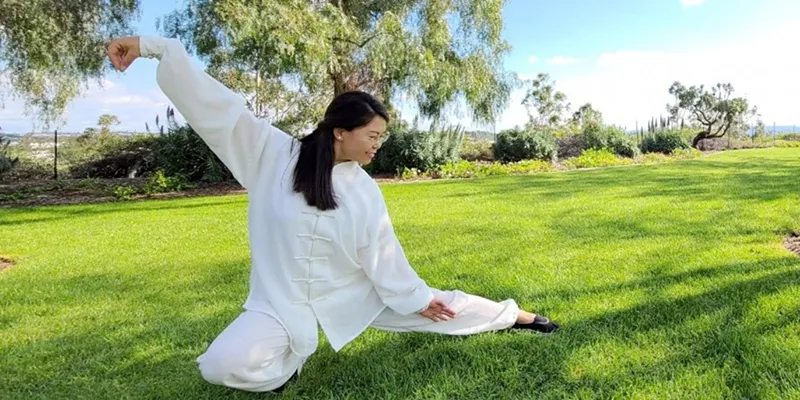
While a yoga mat offers sufficient space for many practices, authentic Tai Chi demands significantly more room. This is a distinct disadvantage for those with limited living space or access to suitable outdoor areas. Performing even a 24 simplified tai chi short form properly requires enough space to move freely forwards, backwards, and sideways without limit. The characteristic wide stances, deep steps, expansive arm movements, and turning maneuvers need a clear area, typically several meters in each direction.
Practicing Tai Chi outdoors is highly recommended. The connection to natural elements, fresh air, and grounding energy enhances the experience. However, the weather conditions, like extreme cold, heat, rain, and wind, can disrupt practice. Urban environments may lack safe, peaceful, and sufficiently large spaces. Indoor practices require dedicated halls or large rooms, which are making consistent practice challenging for many.
Disadvantage 3: The Scarcity of Authentic Transmission

Perhaps the most critical disadvantage facing prospective students is the lack of access to professional, authentic Tai Chi instruction in many cities and regions. While “Tai Chi” classes might appear in generic gyms, community centers, or online platforms, the quality, depth, and authenticity vary wildly. Learning from an unqualified instructor or an incomplete system is not just ineffective; it has no effect or is even harmful.
Superficial teaching often focuses on mimicking external movements, neglecting internal principles, proper body mechanics, and energy. This leads to empty movement without substance, yielding minimal health benefits and potentially reinforcing poor posture or movement habits. Students may become disillusioned.
Looking for a Professional Tai Chi School:
- Clear Transmission: Connection to a recognized master and traditional Chen, Yang, Wu, Sun style, etc.
- Structured Curriculum: Progressive learning, encompassing Zhan Zhuang, Chan Si Jin, form work, push hands, theory, and application.
- Qualified Instructors: Teachers with verifiable certification, significant training under masters, and a deep understanding of principles, not just forms.
- Appropriate Space: Enough space for safe practice of forms and partner work.
Disadvantage 4: Is Your Coach the Real Deal?
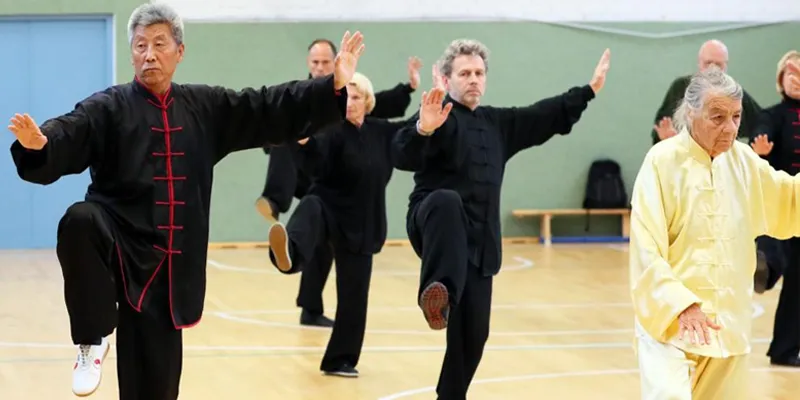
Closely tied to school quality is verifying the authenticity and competence of the Tai Chi coach. With no universal governing body or standardized certification, anyone can claim to teach Tai Chi. This makes it important to verify a coach’s background, understanding, and teaching methods. A coach lacking deep understanding cannot teach the internal aspects necessary for true health benefits and martial efficacy.
Chen Style Tai Chi: Characterized by its clear expression of both soft and explosive power, lower stances, and silk-reeling spirals. It is the original and most martially oriented style. It is highly recommended for those seeking a comprehensive understanding of Tai Chi principles, robust physical conditioning, and martial applications. It provides a strong foundation applicable to health and combat.
Sun Style Tai Chi: Known for its higher stances, smooth steps, and qigong influences. It is often recommended for older adults or those with joint concerns due to its upright posture and fluid transitions.
Wu Style Tai Chi: Emphasizes compact, subtle movements, a forward-leaning posture, and sensitivity. Suitable for those interested in internal work and push hands.
Chen Style Tai Chi: When seeking authenticity, lineage is paramount.
Professor Shen Jiangfei stands as a beacon of authentic Chen Style transmission. As the 32nd-generation successor of Chen Family Tai Chi, his teaching embodies centuries of accumulated wisdom and precise technical knowledge, ensuring students receive genuine instruction. Learning from such a source guarantees access to the complete system.
Disadvantage 5: Tai Chi Does Not Cause Muscle Soreness
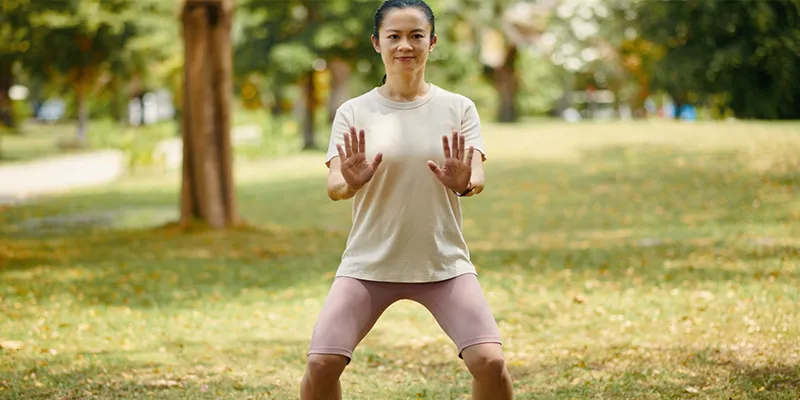
For someone used to weightlifting or high-intensity gymnastics, Tai Chi can initially feel “easy” on the muscles. So, they are often perceived as a disadvantage by those seeking intense muscular exhaustion because Tai Chi does not typically induce significant muscular fatigue or hypertrophy in the way Western strength training does.
Why No Muscle Burn? Tai Chi’s power generation is different. It emphasizes:
Power is generated through integrated structure, elastic energy storage/release in fascia, tendons, ligaments, and ground force reaction, rather than isolated muscle contraction.
Muscles are engaged minimally and only as needed to maintain structure and direct force, avoiding constant tension. The work is deep and sustained, not explosive and fatiguing.
While not inducing muscle “pump,” Tai Chi significantly improves circulation, lymphatic flow, and parasympathetic nervous system activation, contributing to its great health benefits.
Disadvantage 6: Potential for Injury Under Improper Guidance

When practiced correctly, Tai Chi is exceptionally joint-friendly. However, performed incorrectly, particularly without expert supervision, Tai Chi can place undue stress on the knees and ankles, leading to injury. This is a significant disadvantage for self-taught learners.
How Can Tai Chi Damage Joints?
Allowing the knee to extend beyond the toes during lunges or twists, or letting the knee collapse inward during weight-bearing steps.
Pushing the body into deep stances (like “Snake Creeps Down” in Chen style) without adequate strength, flexibility, or understanding of pelvic alignment.
Rotating the upper body while the foot is fixed and the knee is deeply bent, without proper hip engagement.
Failing to sink the weight properly, causing instability and compensatory tension in the joints.
Correct practice will also cause mild soreness:
Knees must track precisely over toes during lunges and never collapse inward. Weight shifts must be controlled and complete before turning. Deep stances are gradual.
Weight sinks downward through correct pelvic tilt and relaxation, not by forcing the knees forward.
Mild muscle soreness, particularly in the thighs, hips, and lower back from holding postures and engaging new muscle groups correctly, is normal. Sharp, localized joint pain is NOT normal and signals incorrect practice requiring immediate correction by a qualified instructor.
Disadvantage 7: Tai Chi May Make Your Condition Worse
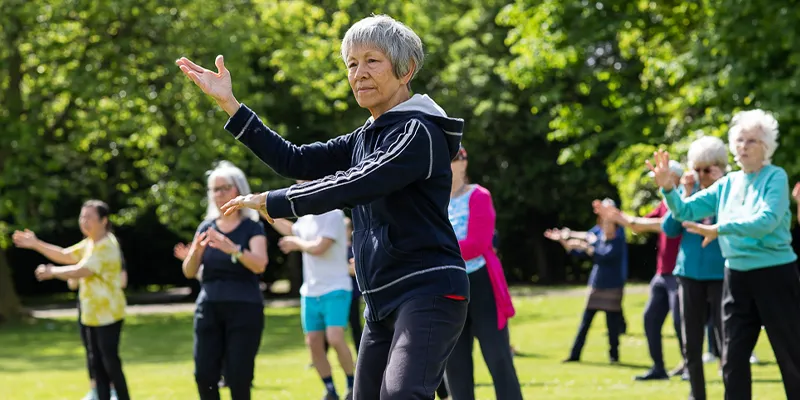
While Tai Chi is widely used for rehabilitation and managing chronic conditions, practicing with an existing injury without proper medical clearance and highly qualified, adaptive instruction carries the risk of exacerbation. Tai Chi is not a one-size-fits-all solution.
Practicing Tai Chi with a recent ligament tear or severe muscle strain is generally contraindicated until healed.
Chronic Conditions like Arthritis and Disc Issues: Tai Chi can be beneficial if the practice is adapted. However, performing deep stances, forceful twists, or movements exceeding the joint’s current range of motion under inflammation can worsen symptoms.
Anyone with a pre-existing injury or chronic condition must consult their physician or physical therapist before starting Tai Chi.
Overcoming These Disadvantages Solution
Knowing these disadvantages is not a condemnation of Tai Chi but a call for informed, high-quality practice. Shen Jiangfei School can overcome these shortcomings:
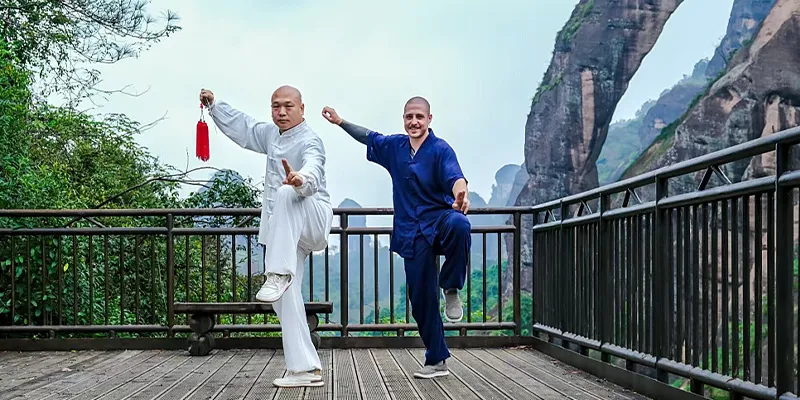
Mastering Time Effectively: Our progressive curriculum, developed over decades by Professor Shen Jiangfei, breaks down the complexities into achievable steps. Expert instruction learning, ensuring students experience tangible benefits early on, building motivation for the long-term journey.
Space Solutions: We offer spacious, dedicated training halls designed specifically for Tai Chi movement. For those unable to attend physically, our online platform provides structured virtual classes and detailed instructional resources, allowing effective practice even in limited home spaces with expert remote guidance.
Guaranteed Authenticity and Quality: Rooted in the unbroken 32nd Generation Chen Family lineage of Professor Shen Jiangfei, we offer the gold standard in Tai Chi transmission. Our instructors undergo rigorous, years-long training under Professor Shen, ensuring deep understanding and precise teaching of both form and internal principles.
Authentic Coaches: Learn directly from Professor Shen Jiangfei or his senior certified disciples. Their depth of knowledge ensures you learn correctly from day one, avoiding the pitfalls of poor form and misunderstanding.
Understanding the “Work”: Our instructors clearly explain the unique physiological effects of Tai Chi—the focus on tendon strength, fascial integration, and internal energy—resetting expectations and helping students appreciate the profound, less obvious work happening within.
Injury Prevention as a Core Principle: Instructors provide meticulous, individualized alignment corrections, emphasize building strength safely within stances, and teach students to listen to their bodies. We proactively address potential stress points, especially for knees and ankles.
Safe Practice for All Conditions: Our instructors are trained to work safely and effectively with students managing injuries or chronic conditions, always in consultation with the student’s healthcare providers. We offer specialized programs focusing on rehabilitation and gentle practice.
Conclusion
Tai Chi is an art offering benefits for physical health, mental clarity, and energetic vitality. However, the significant time commitment, spatial needs, scarcity of authentic instruction, risk of improper practice leading to injury, and unique physiological demands are genuine disadvantages that potential practitioners must acknowledge. Ignoring these realities leads to frustration, dropout, and sometimes harm.
The solution lies not in abandoning Tai Chi, but in choosing the right path. Experience the difference authentic, expertly guided Tai Chi makes.
Discover how Shen Jiangfei Tai Chi International School provides the structured, safe, and deeply knowledgeable environment needed to navigate these challenges and unlock the true potential of this ancient art. Ready to start your Tai Chi journey the right way? Submit the form below to receive our detailed information on our classes with Professor Shen Jiangfei and his certified instructors.

